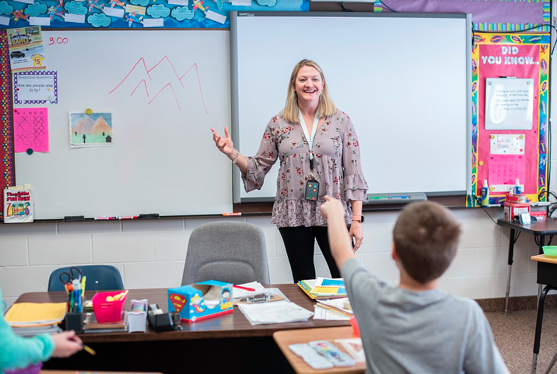As any teacher can attest, interruptions are an inevitable part of every school day. When a school contains dozens of staff members and potentially hundreds of students, not to mention other factors like maintenance issues, fire drills, and assemblies, it’s easy to see how unexpected issues can pop up.
Plenty of research has been done about the impact of frequent interruptions and the negative repercussions on productivity. When the unexpected happens, teachers are forced to divert their attention away from teaching and can find it difficult to get back on track. Students may have an even harder time than adults recovering their focus after an interruption. Some interruptions may be unavoidable, but with the support of a discreet school alert system, teachers can minimize the time spent dealing with disturbances, or even prevent them before they start.
Understanding Why Disruptions Occur
Certain student behavior issues are now recognized as symptoms of diagnosable disorders, including anxiety, Post Traumatic Stress Disorder (PTSD), Oppositional Defiant Disorder (ODD), Attention Deficit Disorder (ADD), and many others. Every student is different. Even students that haven’t been diagnosed with a specific disorder still may need extra support and guidance to help them focus and learn in the classroom.

Understanding the needs of individual students is key to helping them be as successful as possible, but this can be overwhelming.
When supervising an entire classroom of students—each with their own needs, backgrounds, and learning styles—it can be challenging to maintain a learning environment that fits all students’ needs.
How School Alert Systems Can Help
Many schools have support services for managing student behavior, but reaching them during a disruptive incident can be difficult. Sometimes, the simple act of walking to the phone can escalate a disruption to a much more serious level, which means the teacher has to carefully consider how to handle the situation. With a silent and efficient school alert system, teachers can be discreet, allowing them to keep their focus on teaching, knowing someone is on the way to assist.

Teachers get to know their students quite well and can often tell in advance if a student is going to become disruptive. Not all children have the same level of attention and focus. There may be signs a particular student is getting distracted, fidgety, or overwhelmed by what’s happening in the classroom. Certain students may have moments throughout the day where they need to step away and take a break. Teachers can see this coming. Having a simple and discreet way to get ahead of these behavioral issues keeps teachers’ attention on teaching and minimizes distraction for other students.
Providing Positive Redirection for Students
Having a method for teachers to summon help can be immensely beneficial for the student causing the disruption. This way, the student’s needs can be addressed in a way that is not distracting to others and also avoids causing shame for behavior that may not be intentional. The person coming to help can quietly enter the room and ask the student to come assist them with something, offer a break, or find any excuse to help the student leave the situation and collect themselves.
With a school alert system like Badge Messenger®, teachers have more support for managing behavior in the classroom. Teachers and other staff members wear a Messenger device around their necks, which they can use to request assistance with just the push of a button. It’s fast, easy, and completely silent.
This technology could be life-changing for students struggling with disruptive behaviors, and allow them to feel understood rather than embarrassed. Because they have been supported in a positive way, students may actually come to understand their own needs better, and over time will be able to more effectively regulate their disruptive emotions.
Creating an Environment for Learning
A classroom is a community. As a teacher, knowing the needs of all students is part of the job. Teachers work very hard to make their classroom a safe, fun environment for everyone. Disruptive incidents cause a ripple in time spent both dealing with the incident and refocusing the other students who have been derailed. Being proactive in diffusing an incident helps the classroom run smoother. Having a discreet, efficient way to resolve student behavior issues keeps a teacher’s focus on teaching and provides a positive, supportive atmosphere for all learners.
